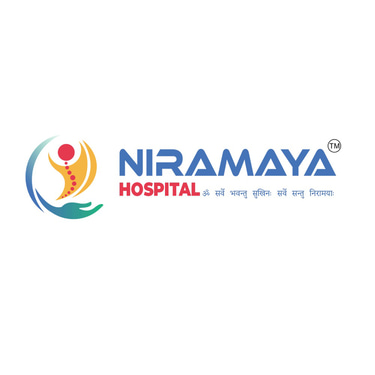Understanding Scoliosis: Causes, Symptoms, and Treatment Options
Learn about scoliosis, its causes, symptoms, and advanced treatment options. Discover expert insights on managing and correcting spinal curvature for a better quality of life.
Dr. Amrish Kumar Jha
1/4/20253 min read


Understanding Scoliosis: Causes, Symptoms, and Treatment Options with Dr. Amrish Kumar Jha
Scoliosis, an abnormal curvature of the spine, affects people of all ages but is most commonly diagnosed in children and adolescents. While mild cases may not cause significant issues, severe scoliosis can lead to pain, limited mobility, and complications in respiratory and cardiovascular function. In this blog, Dr. Amrish Kumar Jha, a leading orthopedic expert, provides insights into the causes, symptoms, and treatment options for scoliosis, offering guidance for better management and improved quality of life.
What is Scoliosis?
Scoliosis is a condition where the spine curves sideways, typically in an "S" or "C" shape. While a slight curve may not cause problems, severe scoliosis can result in significant discomfort, posture issues, and potential long-term health complications. Scoliosis can occur in various forms, with some individuals showing no obvious symptoms, while others experience noticeable pain and discomfort.
Causes of Scoliosis
According to Dr. Amrish Kumar Jha, scoliosis can have several underlying causes, including:
1. Idiopathic Scoliosis:
This is the most common form and has no known cause. It usually develops in children or adolescents, typically around the time of puberty.
2. Congenital Scoliosis:
Occurs when abnormal spinal development occurs in utero, leading to structural issues that cause the spine to curve.
3. Neuromuscular Scoliosis:
Conditions like cerebral palsy, muscular dystrophy, or spinal cord injuries can lead to abnormal spinal curvature due to weakened muscles or imbalanced control over the spine.
4. Degenerative Scoliosis:
Common in older adults, degenerative scoliosis results from wear and tear of the spine's discs and joints, leading to spinal curvature over time.
Symptoms of Scoliosis
The symptoms of scoliosis may vary, depending on the severity of the curvature and the underlying cause. Dr. Amrish Kumar Jha explains that common signs include:
✅ Uneven shoulders or hips
✅ One side of the ribcage protruding more than the other
✅ A visible spinal curve when viewed from behind
✅ Back pain or discomfort, especially during physical activity
✅ Limited range of motion or difficulty bending
Severe scoliosis can also lead to complications such as difficulty breathing due to pressure on the lungs and heart, highlighting the importance of timely diagnosis and treatment.
Diagnosis of Scoliosis
Early detection is essential for effective scoliosis management. The diagnostic process typically involves:
Physical Examination: The doctor will examine your back, shoulders, and posture, often using the Adam's Forward Bend Test to observe any spinal curvature.
Imaging Tests: X-rays are used to assess the degree of spinal curvature, while MRI or CT scans may be recommended to determine if there are any underlying conditions affecting the spine.
Treatment Options for Scoliosis
Dr. Amrish Kumar Jha emphasizes that treatment for scoliosis varies depending on the severity of the curve and the patient's age. Treatment options include:
1. Observation and Monitoring:
In mild cases, especially in growing children, doctors may opt for regular monitoring to track the progression of the curve. If the curve is stable and the individual is not experiencing pain, no immediate treatment may be required.
2. Bracing:
For children and adolescents whose spines are still growing, a brace may be prescribed to prevent further curvature progression. Bracing is most effective when the curve is between 25° and 40°.
3. Physical Therapy:
Customized physical therapy can help strengthen the muscles supporting the spine, improve posture, and reduce discomfort. Exercises designed to stabilize the spine and increase flexibility are often recommended.
4. Surgery:
In severe cases, where the curvature exceeds 40° or 50°, spinal fusion surgery may be recommended. This procedure stabilizes the spine by fusing the vertebrae together, preventing further curvature and alleviating pain. In some cases, rods and screws are used to straighten the spine during surgery.
Living with Scoliosis: Tips for Management
Managing scoliosis effectively requires a proactive approach. Here are some tips from Dr. Amrish Kumar Jha to help you maintain a good quality of life with scoliosis:
✅ Maintain a healthy weight to reduce strain on the spine
✅ Practice good posture to alleviate unnecessary pressure on the spine
✅ Engage in physical therapy exercises regularly to strengthen muscles
✅ Wear a back brace, if prescribed, and follow your doctor’s guidelines
✅ Avoid heavy lifting or activities that exacerbate pain or discomfort
When Should You Seek Treatment?
If you notice signs of scoliosis, such as uneven shoulders, persistent back pain, or difficulty moving, it’s important to consult with a specialist like Dr. Amrish Kumar Jha for a comprehensive evaluation. Early diagnosis and intervention are key to preventing the condition from worsening and to ensuring the best possible outcome.
Conclusion
Scoliosis is a manageable condition when diagnosed and treated early. With advancements in treatment options, including bracing, physical therapy, and surgical interventions, individuals with scoliosis can lead active and fulfilling lives. Dr. Amrish Kumar Jha is committed to providing personalized care and expert guidance to help you manage scoliosis effectively.
If you or a loved one is experiencing signs of scoliosis, don't wait – consult Dr. Amrish Kumar Jha for expert diagnosis and treatment options.
